দ্য CZ purlin making machine, also known as the C&Z purlin roll forming machine, stands as a cornerstone in the construction industry. This remarkable machine efficiently transforms metal coils into C and Z-shaped profiles, commonly referred to as purlins. These purlins serve as the skeletal framework for roofs and walls in various structures, from industrial buildings and warehouses to commercial spaces and even residential homes.
Components of CZ Purlin Making Machine
Understanding the key components of a CZ purlin making machine is crucial to appreciating its functionality and potential:
- Uncoiler: This motorized unit feeds the metal coil, typically made of galvanized steel, into the forming process.
- Roll Forming Stations: These stations consist of a series of precisely shaped rollers that progressively bend and form the metal sheet into the desired C or Z profile. The number of stations varies depending on the purlin’s complexity.
- Punching Unit: This component strategically creates holes in the purlin for fastening purposes, ensuring secure installation within the structure.
- Cutting System: This system, typically employing a hydraulic shear, precisely cuts the formed purlin to the required lengths.
- Stacker: This automated stacker efficiently collects and organizes the finished purlins, streamlining the production process.
- Control System: The brains of the operation, the control system governs the entire process, including motor operation, speed control, and length measurement, ensuring consistent and accurate production.
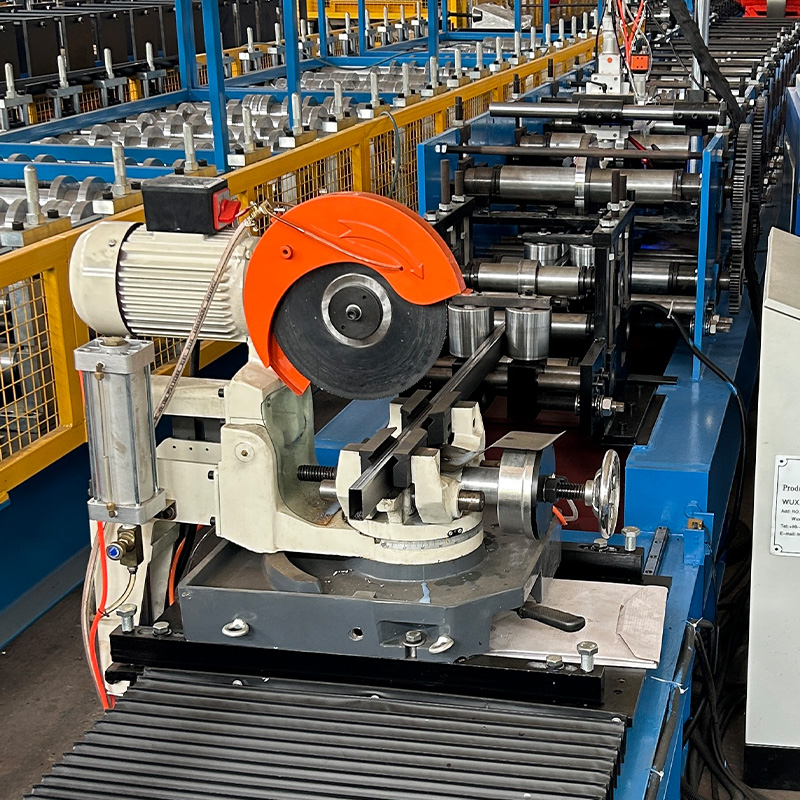
Industrial Applications of CZ Purlin Making Machine
The versatility of CZ purlin making machines extends to a wide range of industrial applications:
- Construction: CZ purlins are widely used in building roofs and walls for various structures, including warehouses, factories, workshops, shopping centers, and even residential homes. Their lightweight nature, coupled with exceptional strength, makes them an ideal choice for various applications.
- Infrastructure: CZ purlins play a vital role in constructing infrastructure projects like bridges, transportation terminals, and agricultural buildings. Their durability and resistance to harsh weather conditions make them well-suited for these demanding environments.
- Solar Power Generation: The CZ purlin making machine contributes significantly to the burgeoning solar energy sector. These machines are instrumental in creating support structures for solar panels, enabling efficient solar power generation.
Factors to Consider When Choosing a CZ Purlin Making Machine
Investing in a CZ purlin making machine requires careful consideration of several factors:
- Production Capacity: Evaluate your anticipated production volume and choose a machine capable of meeting your needs. Production capacities are typically measured in meters per minute.
- Purlins Produced: Consider the specific types and sizes of purlins you plan to manufacture. Ensure the machine offers the necessary roll forming stations and adjustments to accommodate your desired purlin profiles.
- Material Thickness: Select a machine compatible with the desired thickness of the metal coil you intend to use. This ensures proper forming and optimal performance.
- Automation Level: Choose the level of automation that aligns with your production needs and budget. Fully automatic machines offer increased efficiency and consistency, while semi-automatic options may be suitable for smaller operations.
- Brand Reputation and Customer Service: Opt for a reputable brand known for quality manufacturing and reliable customer service. This ensures access to readily available spare parts and technical support in case of any issues.
Understanding the Costs Associated with CZ Purlin Making Machines
The cost of a CZ purlin making machine varies depending on several factors, including:
- Level of automation: Fully automatic machines generally command a higher price tag compared to their semi-automatic counterparts.
- Production capacity: Machines with higher production capacities typically cost more.
- Brand and features: Reputable brands and machines with additional features like automatic stacking or advanced control systems may incur higher costs.
While a ballpark figure is difficult to provide due to these varying factors, prices typically range from tens of thousands to hundreds of thousands of dollars.
-
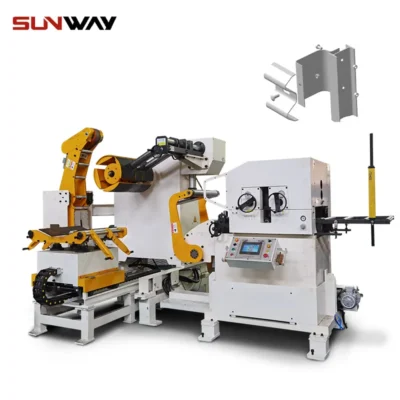 Highway Guardrail End Terminal Forming Machine
Highway Guardrail End Terminal Forming Machine -
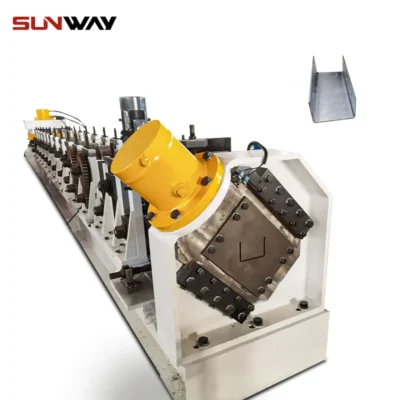 Highway U/C Post Roll Forming Machine
Highway U/C Post Roll Forming Machine -
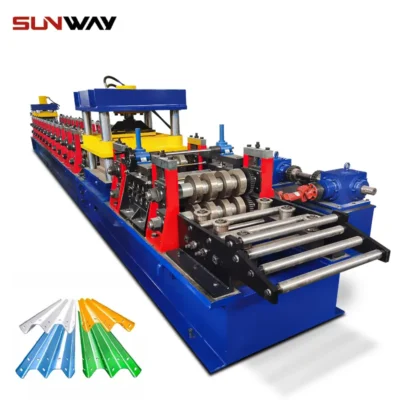 2 Waves Highway Guardrail Roll Forming Machine
2 Waves Highway Guardrail Roll Forming Machine -
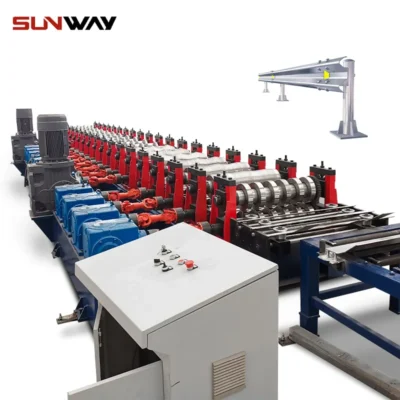 3 Waves Highway Guardrail Roll Forming Machine
3 Waves Highway Guardrail Roll Forming Machine -
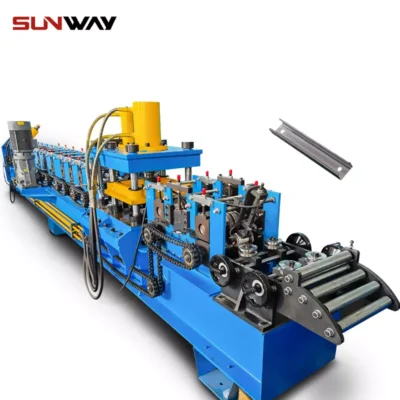 সি সেকশন ব্রেসিং ওমেগা স্টোরেজ র্যাক খাড়া পোস্ট রোল ফর্মিং মেশিন
সি সেকশন ব্রেসিং ওমেগা স্টোরেজ র্যাক খাড়া পোস্ট রোল ফর্মিং মেশিন -
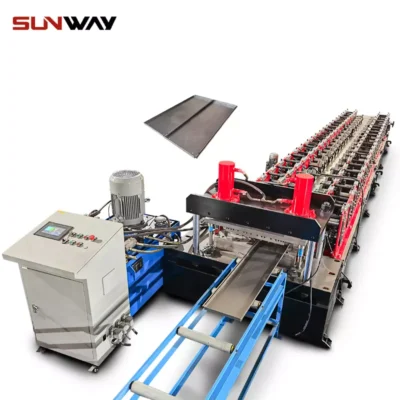 স্টিল বক্স প্লেট মেকিং রোল ফর্মিং মেশিন
স্টিল বক্স প্লেট মেকিং রোল ফর্মিং মেশিন -
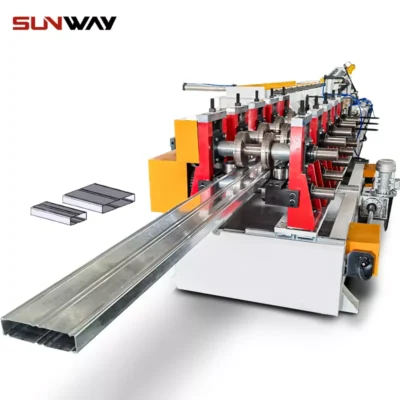 বক্স মরীচি স্টীল রোল শেল্ফ কলাম জন্য মেশিন গঠন
বক্স মরীচি স্টীল রোল শেল্ফ কলাম জন্য মেশিন গঠন -
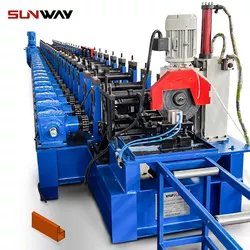 প্যালেট র্যাকিং স্টেপ বিম পি বিম রোল তৈরির মেশিন
প্যালেট র্যাকিং স্টেপ বিম পি বিম রোল তৈরির মেশিন -
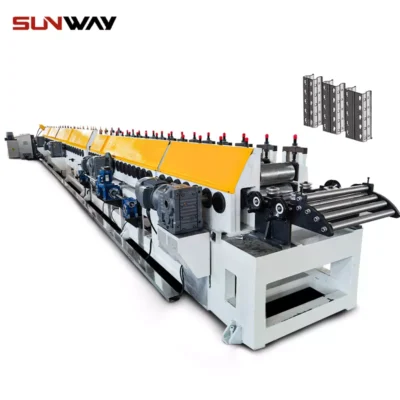 গুদাম শেল্ফ খাড়া রোল গঠন মেশিন
গুদাম শেল্ফ খাড়া রোল গঠন মেশিন
Limitations and Considerations of CZ Purlin Making Machines
While CZ purlin making machines offer numerous benefits, it’s important to acknowledge their limitations and factors to consider:
Limitations:
- Limited profile complexity: Compared to some other roll forming machines, CZ purlins are generally limited to simpler C and Z profiles. More intricate shapes might require specialized machines.
- Material dependence: The performance and strength of CZ purlins heavily rely on the quality and thickness of the metal coil used. Selecting appropriate material is crucial.
- Skill requirement: Operating and maintaining a CZ purlin making machine, especially more complex models, may require some technical expertise and training for optimal performance.
Considerations:
- Safety measures: Implementing proper safety protocols is crucial when operating any machinery, including CZ purlin making machines. Ensure adequate training for operators and follow recommended safety guidelines.
- Environmental regulations: Depending on your location, there might be specific environmental regulations regarding waste management and noise levels generated by the machine’s operation. Familiarize yourself with these regulations and ensure compliance.
- Maintenance needs: Regular maintenance is essential to ensure the smooth operation and longevity of the CZ purlin making machine. Schedule routine maintenance checks and follow the manufacturer’s recommendations for optimal performance.
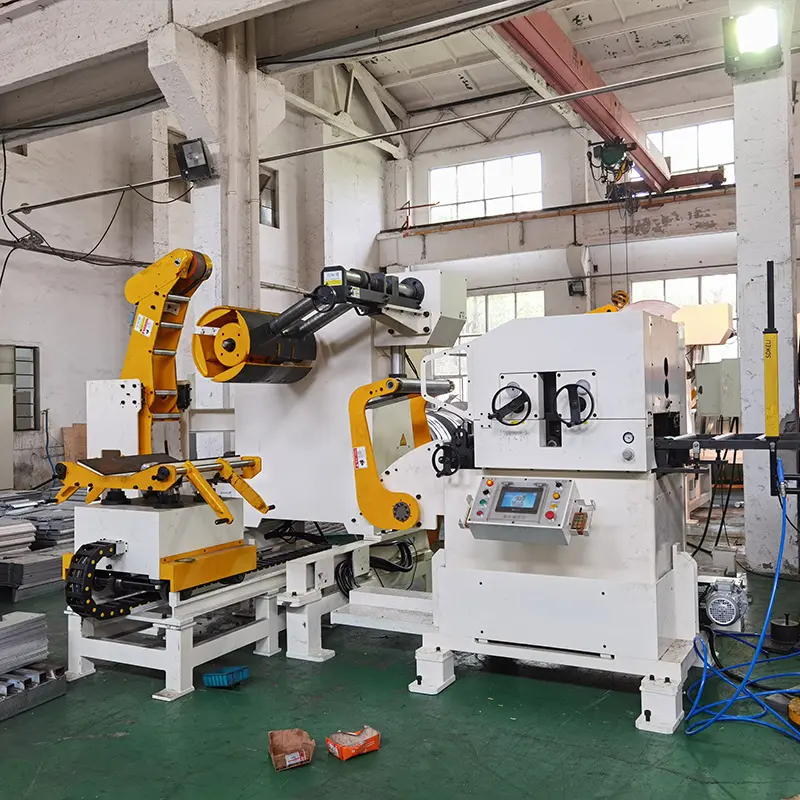
FAQ
1. What are the different types of CZ purlin making machines?
There are two main types of CZ purlin making machines:
- Automatic: These machines offer complete automation, handling the entire process from uncoiling the metal coil to cutting and stacking the finished purlins. They are ideal for high-volume production and require minimal operator intervention.
- Semi-automatic: These machines require some manual intervention, such as loading the metal coil and unloading the finished purlins. They are suitable for smaller production runs or operations with budget constraints.
2. What factors affect the price of a CZ purlin making machine?
Several factors influence the cost of a CZ purlin making machine:
- Level of automation: Fully automatic machines are generally more expensive than semi-automatic ones.
- Production capacity: Machines with higher production capacities typically cost more.
- Brand and features: Reputable brands and machines with additional features like automatic stacking or advanced control systems may incur higher costs.
- Roll forming stations: Machines capable of producing a wider variety of purlin sizes and profiles might require more roll forming stations and come at a higher price.
3. What are the benefits of using CZ purlins?
CZ purlins offer several advantages over traditional building materials:
- Lightweight: They reduce the overall structural load and simplify construction compared to materials like wood or concrete.
- High strength: Despite their lightweight nature, they possess exceptional strength to withstand significant loads.
- Cost-effective: The efficient manufacturing process translates to cost savings compared to other options.
- Durable: Typically galvanized for enhanced corrosion resistance, they offer long-lasting performance with minimal maintenance.
- Versatile: They can be produced in various sizes and profiles, catering to diverse construction needs.
4. What are the limitations of CZ purlins?
While versatile, CZ purlins have some limitations:
- Limited profile complexity: They are generally limited to simpler C and Z profiles. More intricate shapes might require specialized machines.
- Material dependence: Their performance and strength heavily rely on the quality and thickness of the metal coil used. Selecting appropriate material is crucial.
- Fire resistance: Depending on the specific material and coating, their fire resistance might be lower than some alternative materials.
5. What are the safety considerations when operating a CZ purlin making machine?
Operating any machinery, including CZ purlin making machines, requires proper safety protocols:
- Training: Ensure operators receive adequate training on safe operation and maintenance procedures.
- Personal protective equipment (PPE): Equip operators with appropriate PPE, such as gloves, safety glasses, and hearing protection.
- Machine guards: Ensure all safety guards are in place and functioning properly before operating the machine.
- Emergency stop procedures: Train operators on emergency stop procedures and ensure they are readily accessible.
Frequently Asked Questions (Supplemental)
1) What production tolerances are realistic for a modern CZ purlin making machine?
- With encoder-synced flying shear and servo punching, length tolerance ±0.5–1.0 mm; flange/web width ±0.5 mm; hole pitch ±0.5–1.0 mm on 1.5–3.0 mm galvanized steel, assuming proper leveling and pass design.
2) How fast can a CZ purlin roll forming line run with inline punching?
- Typical 20–45 m/min for 1.5–2.5 mm material with rotary/servo punching; heavy-gauge up to 3.0–4.0 mm often runs 12–25 m/min. Cut strategy (hydraulic vs flying) and hole density are the main limiters.
3) What’s the difference between “auto size change” CZ purlin machines and traditional lines?
- Auto size change uses servo-adjusted stands, motorized spacers, and tool ID to switch web/flange/lip and C↔Z without manual roll swapping, cutting changeovers to 5–12 minutes. Traditional lines need manual shimming and roll changes (30–90 minutes).
4) Can one machine produce both C and Z purlins with lips and pre-punched slots?
- Yes. A combined CZ purlin roll forming machine with reversible forming sequence, adjustable lips, and a CNC punching unit can output C or Z, with custom slot/bolt patterns driven by recipes.
5) What coil grades and finishes work best for solar and coastal projects?
- Galvanized Z275–Z350 or Z450 (where specified), or AZ150–AZ200 (aluzinc); structural grades S350GD–S550GD (EN 10346) or ASTM A653 50–80 ksi. For severe corrosion zones, specify higher coating mass or hot-dip galvanizing post-fabrication per ISO 12944 guidance.
2025 Industry Trends for CZ Purlin Making Machines
- Auto-size change is mainstream: Servo stand adjustment and tool RFID deliver sub-15-minute changeovers for high-mix SKUs.
- Inline analytics: Vision systems and laser gauges feed SPC dashboards; plants track CpK on web, flange, and hole pitch in real time.
- Higher-strength steels: Growing use of S450–S550 grades enables lighter sections without sacrificing capacity; demands better leveling and pass design.
- Traceability and EPDs: EPCs request coil-to-part traceability; QR-coded purlins link to mill certs and Environmental Product Declarations.
- Energy efficiency: Regen servo drives and smart warm-up routines reduce kWh/ton; energy intensity now part of RFQ scoring.
- Safety compliance: ISO 13849-1 PL d safety circuits and guided LOTO via HMI increasingly specified.
Benchmark Table: CZ Purlin Line KPIs (Shop-Floor Reality 2023 vs 2025)
| KPI | 2023 Typical | 2025 Leading Lines | Enabler | Reference/Notes |
|---|---|---|---|---|
| Changeover (C↔Z, size) | 30–60 min | 6–12 min | Auto size change, servo stands, RFID tooling | OEM demos at FABTECH/EuroBLECH; SME reports |
| Line speed (1.5–2.5 mm) | 15–30 m/min | 30–45 m/min | Rotary/servo punching, flying shear | Vendor app notes |
| Length tolerance | ±1.5 mm | ±0.5–1.0 mm | Encoder + servo shear | NIST smart manufacturing principles |
| Scrap rate | 2–4% | 0.8–2% | Inline vision + recipe control | Plant case data |
| Energy (kWh/ton) | 110–150 | 80–110 | VFD/regen + setup optimization | World Steel energy benchmarking |
Useful sources:
- NIST Smart Manufacturing: https://www.nist.gov/programs-projects/smart-manufacturing
- World Steel Association (EPDs, energy): https://worldsteel.org
- EN 10346 and ASTM A653 specs overview: https://standards.globalspec.com and https://www.astm.org
- ISO 13849-1 safety: https://www.iso.org
Latest Research Cases
Case Study 1: Auto Size Change CZ Line for High-Mix Purlin Production (2025)
Background: A regional fabricator serving EPC projects needed rapid C↔Z switches, variable hole patterns, and 1.8–3.0 mm coils.
Solution: Implemented a CZ purlin making machine with servo-adjustable stands, reversible pass design, CNC rotary punching, laser width gauge, and OPC UA data link to an SPC/OEE dashboard.
Results: Changeover reduced from 48 to 9 minutes; first-pass yield improved from 96.2% to 98.5%; scrap dropped to 1.3%; documented coil-to-part traceability enabled EPD-backed bids on two logistics hubs.
Case Study 2: Throughput and Energy Optimization on Legacy CZ Line (2024)
Background: An older hydraulic-shear line struggled at 18 m/min and high energy use.
Solution: Upgraded to flying cut-off, added servo feed with encoder synchronization, re-optimized pass schedule using roll design software, and deployed energy monitoring.
Results: Sustained speed 18 → 32 m/min (+78%); energy intensity cut 20% (kWh/ton); length tolerance tightened to ±1.0 mm; ROI achieved in 11 months.
Expert Opinions
- Prof. Ben Schafer, Director, Cold-Formed Steel Research Consortium (CFSRC), Johns Hopkins University
Viewpoint: “Higher-strength steels in CZ purlins are effective if accompanied by robust hole and bearing design. QA must verify geometric tolerances, not just tensile strength.” Source: https://cfsrc.org - Elena Rossi, Product Director, Dallan SpA (roll forming systems)
Viewpoint: “In 2025, buyers prioritize auto size change and integrated vision. These two features alone can reclaim 10–15% of available production time on high-mix work.” Company: https://www.dallan.com - Michael Harnett, Functional Safety Assessor, TÜV SÜD
Viewpoint: “Specify ISO 13849-1 PL d with validated safety PLCs and map LOTO procedures into the HMI. Safety-integrated design reduces both incidents and unplanned stops.” Organization: https://www.tuvsud.com
Practical Tools and Resources
- AISI S100 and CFS design resources: https://www.buildusingsteel.org
- Coil and coating guidance (galvanized/aluzinc): International Zinc Association: https://zinc.org
- OPC UA interoperability for plant data: https://opcfoundation.org
- Inline metrology vendors: Keyence (vision/laser): https://www.keyence.com; Cognex: https://www.cognex.com
- Energy and EPD insights for steel products: World Steel Association: https://worldsteel.org
- Roll design primers and tooling tips: The Fabricator knowledge base: https://www.thefabricator.com
RFQ checklist for a CZ Purlin Making Machine:
- Profiles and ranges: C & Z with target web (e.g., 100–300 mm), flange, lip, and thickness window (1.2–4.0 mm)
- Changeover: target ≤12 min; servo stands, motorized spacers, tool RFID
- Punching: CNC rotary or servo punching with recipe-driven patterns
- QA: laser width + camera for hole pitch, inline SPC; CpK ≥1.33 on critical dims
- Connectivity: OPC UA/MQTT; OEE, scrap, energy/ton logging; coil-to-part traceability/EPD support
- Safety: ISO 13849-1 PL d; interlocked guards; guided LOTO in HMI; risk assessment documentation
- Support: local service SLAs, spare parts lead times, training and FAT/SAT plans
Last updated: 2025-10-24
Changelog: Added 5 supplemental FAQs, 2025 trends with KPI table, two recent case studies, expert viewpoints, and curated tools/resources tailored to CZ Purlin Making Machine buyers and operators.
Next review date & triggers: 2026-04-30 or earlier if EN/ASTM standard updates, major OEM releases on auto size change/inline QA, or EPD/traceability requirements change in public tenders.
